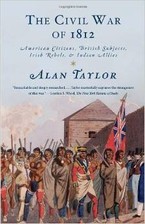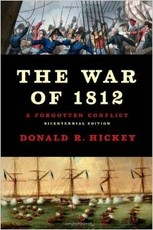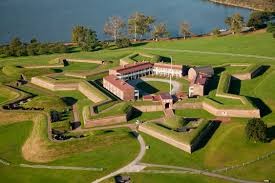Fort McHenry
Introduction
Text-to-speech Audio
Fort McHenry is a star-shaped coastal fortification dating back to the Federal Era. The fort is best known for its role in the War of 1812. In September 1814, soldiers at the fort endured and successfully defended Baltimore Harbor from an attack by the British navy. Although British warships lined Chesapeake Bay and issued non-stop barrage upon the fort between September 13th and 14th of that year, the fort held and nearby ground troops likewise thwarted British plans to take the harbor. It was during this incredible bombardment of Fort McHenry that Francis Scott Key (an American detained on one of the British ships in the harbor) became inspired to write the poem that became the National Anthem. The lines within The Star-Spangled Banner refer to the attack, with the significance of the flag being that it gave proof that the fort had held and the British could not capture Baltimore.
Images
The Civil War of 1812-Click the link below for more information about this book.

The War of 1812: A Forgotten Conflict-Click the link below for more information about this book.

Fort McHenry is open daily and remains the most popular tourist location in Baltimore

Backstory and Context
Text-to-speech Audio
Fort McHenry was constructed between 1799 and 1802. It was in the shape of a five-pointed star, which was a popular design during the period. Each point of the star was visible from the point on either side and every area of land surrounding the fort could be covered with as few as five men.
The walls of Fort McHenry and the buildings within were constructed of brick. There were four barracks to house the garrison consisting of the Commanding Officer's Quarters, Junior Officers' Quarters and two buildings for the enlisted men. A guardhouse stood next to the Commanding Officer's Quarters. Here, soldiers of the Fort McHenry Guard lived and worked, sometimes unruly soldiers were confined in the guardrooms. The Powder Magazine, where the gunpowder was stored, stood between the Commanding Officer's Quarters and the Junior Officers' Quarters. The magazine was of solid enough construction to protect the gunpowder from sparks, fire and explosion.
During the 1830s, major improvements were made to the fort. Second stories were added to the barracks and two new guardhouses were built on each side of the Sally Port to replace the two earlier ones.
The walls of Fort McHenry and the buildings within were constructed of brick. There were four barracks to house the garrison consisting of the Commanding Officer's Quarters, Junior Officers' Quarters and two buildings for the enlisted men. A guardhouse stood next to the Commanding Officer's Quarters. Here, soldiers of the Fort McHenry Guard lived and worked, sometimes unruly soldiers were confined in the guardrooms. The Powder Magazine, where the gunpowder was stored, stood between the Commanding Officer's Quarters and the Junior Officers' Quarters. The magazine was of solid enough construction to protect the gunpowder from sparks, fire and explosion.
During the 1830s, major improvements were made to the fort. Second stories were added to the barracks and two new guardhouses were built on each side of the Sally Port to replace the two earlier ones.
